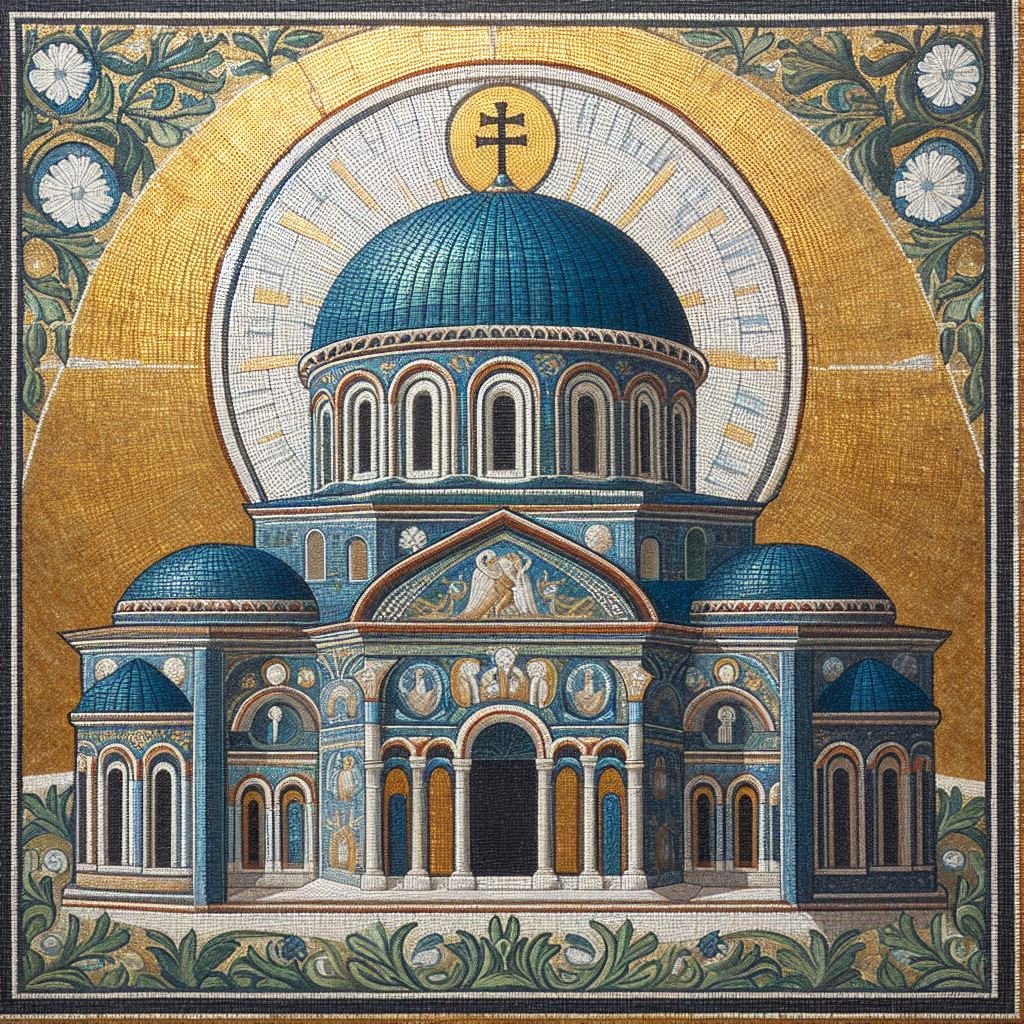Blending the Past: How I Create Mosaics that Mix Byzantine Art with Classical Themes
Hey everyone! I’ve been diving into a new artistic project where I’m blending two iconic art styles: Classical Roman and Byzantine. Both styles have their own unique beauty, but I wanted to see what happens when you mash them together. So, I’ve been creating these cool mosaics that combine the strong, human-centered elements of Classical art with the spiritual, symbolic themes of Byzantine art. Let me walk you through what these images are all about and how I make them!
When I started this project, I knew I wanted to combine the naturalistic, human-focused details of Classical art (think muscular gods, lifelike poses, and anatomical accuracy) with the flat, stylized figures and golden backdrops of Byzantine mosaics. To do this, I use modern digital tools, combining textures, colors, and techniques that reflect both periods. For example, in one of my mosaics, I’ve placed Emperor Justinian and his attendants in rigid, almost stiff poses against a radiant gold background. This part reflects the typical Byzantine style, where divine authority and spirituality are emphasized, not physical form. But then, in the background, I added a Classical god, like Neptune, in a fluid, natural pose—surrounded by swirling ocean waves and sea creatures, celebrating the human form and strength.
What I love most about this project is the contrast in styles. Byzantine art tends to prioritize religious symbolism and divine order, while Classical art is all about celebrating humanity and the natural world. By mixing these two, I get to create a new kind of narrative—one that blends human achievement with divine presence. In some of the images, I play with things like the figures’ poses and their surroundings to emphasize that transition from a material world to a more spiritual, transcendent one. You can see this especially in how I’ve placed Justinian's court with elongated figures—rigid and symbolic—next to Neptune's athletic, lifelike body.
Creating these mosaics is a mix of modern technology and ancient traditions. I start with digital sketches, playing with the position of figures, backgrounds, and color palettes. I use Photoshop and Illustrator to add texture, detail, and shading that reflect the distinct characteristics of both art periods. The real fun begins when I layer everything together—using gold and jewel-toned colors for the Byzantine influence, and adding fluid, natural movement and proportion for the Classical touch. The result? A vibrant, almost surreal blend of the past that creates a fresh visual story.
I’m really excited about how these pieces turned out, and I’ve learned a lot about both art styles along the way. It’s a cool way to experiment with history while still creating something new. I hope you enjoy these pieces as much as I’ve enjoyed making them. Stay tuned for more, as I continue to explore how I can blend other art styles and bring them into the modern world!
If you're interested in my approach, feel free to grab one of my free lessons! We offer two tutorials that dive into the fundamentals of creating great art. What Makes Good Art explores the canons and standards that shape excellent artwork, helping you understand that art isn't just subjective—it follows certain rules. Additionally, we have How to Paint Your Masterpiece, where we guide you through every step of the painting process, showing you exactly what you need to do to create a beautiful piece of art. Whether you're starting out or looking to improve your skills, these lessons will give you the tools you need to create great art.








